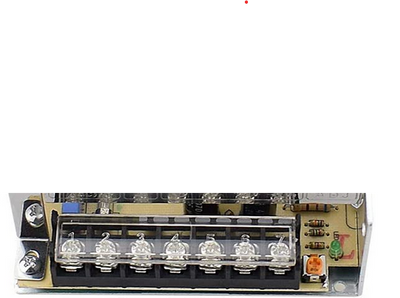First post, by bitslasher
Hi everyone,
I've posted here before about something like this I think, but wanted to solicit some feedback, or perhaps rally some folks together that are much more talented than I am to maybe make this dream a reality.
So, it's no secret that it's getting more and more difficult to find PSUs for the old computers we lovingly try to keep running. From the PC, XT, AT, and now even the early ATX, this is true. Think losing -5V in ATX was bad, the final nail in the coffin is that new systems will be using a PSU that only produces a 12V output. The main board on these systems will be responsible for any further voltage step-down needed.
Is it possible that we as a community can come together and crowd-fund/crowd-design an open-source PSU design would be suitable to our needs?
My motivation for asking for this is from my recent experience with learning how to repair the PSUs in my aging Compaq Deskpro collection. Those old switching PSUs are quite complex and difficult to troubleshoot/fix. Even after being fixed they are still full of components that are now decades old. Fixing one part doesn't keep another one from failing tomorrow. These things can take other parts of a computer with them when they fail, kind of like a ticking time bomb. Considering how rare and expensive older systems are getting, it seems like now is maybe a good time for the community to pull together and build something we all can use to keep our machines from self-destructing.
Like I mentioned, I'm a beginner/novice at diagnosing and repairing these things. I've realized this is almost a fools errand, since fixing these old PSUs is just kicking the can own the road for a potential destructive failure.
Some conversation-starter ideas for a design:
- The design would be for a modular circuit board that takes advantage of modern PSU components to make a safer and more reliable supply for our aging systems.
- The board would replace an existing PSU board in its original case, preserving the look/feel of a computer's period-correct PSU.
- The completed unit would be as "cubical" as possible, not having a large 2-dimensional footprint (see next points on how that might be possible).
- Could be placed inside existing PSU cases using a 3d-printed protective housing, or custom adapters could be 3d printed for specific well known PSU case designs, like IBM PC/AT or Antec ATX for example.
- Imagine the "base" board would provide AC to DC conversion, surge protection, etc. Imagine this as a high-voltage DC power back plane. It should be able to handle the voltage demands that a typical 300W PSU could handle.
- The base board would have some kind of socket system allowing additional daughter boards to be stacked, to provide the actual power rails. Each layer would convert the high-voltage DC to actual 12, -12, 5, -5, 3.3 volts as needed/desired.
- Each power rail board would provide the attachment points for external wires to attach. (I'm thinking it'd be nice to use screws like in the pic below.)
- The idea is have a design that provide for flexibility for adding more rails of a particular voltage, as needed.
- It would be nice maybe to have "personality" daughter cards that would provide the -5V for older systems, or -3.3V for newer ATX systems. These two voltages I don't think ever crossed paths in the wild. (Almost had a pun there.)
- The idea is that a person could open up their busted or old PSU, cut some wires, and attach them to the new board using the screw contacts. The PSU would look the same after the retro-fit.
I hope there are at least a few of you out there with the expertise and know-how to help make this possible!
--Cheers
